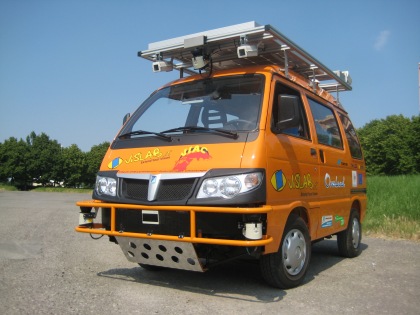Autonomous Vehicle Challenge
 Two driverless and solar power vans have departed from Italy on their way to China via the silk road. During the 13,000 kM trip the vans will drive themselves on standard roads. The hope is that this will help to prove the viability of using current technology to enable autonomous vehicles on public roads.
Two driverless and solar power vans have departed from Italy on their way to China via the silk road. During the 13,000 kM trip the vans will drive themselves on standard roads. The hope is that this will help to prove the viability of using current technology to enable autonomous vehicles on public roads.
The project makes use of smart phones to collect carbon dioxide data along the route in a mobile phone application experiment . As part of the IBM Greenhaviour Project this data is made available publicly by a live streams on the web. The experiment will serve as a pilot for a 'citizen science' scheme, in which anyone can collect and share data using a mobile device.
Currently the vehicles are traveling through Russia. You can track the progress, view the live webcam and get more information at the projects websites: